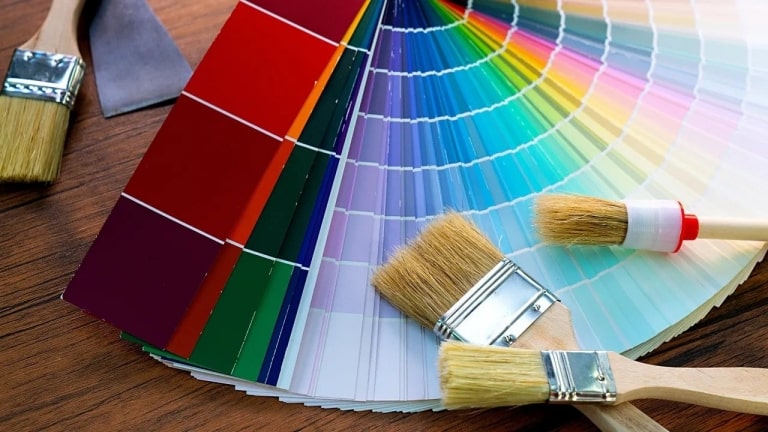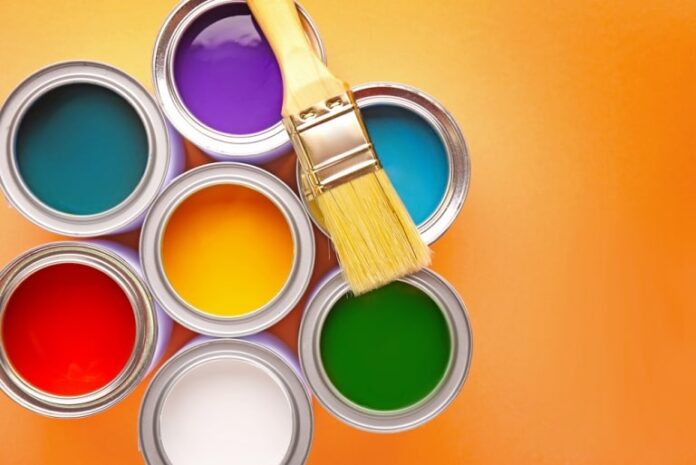When it comes to painting the interior of your home, choosing the right paint is critical to achieving the desired results. To kill two birds with one stone, you may contemplate using leftover outdoor paint for the job.
Such a situation begs the question: can you use exterior paint inside?
In this article, I’ll discuss the differences between interior and exterior paint. I will also go over three reasons why using the latter indoors isn’t a good idea. So, stick around!
Interior vs. Exterior Paint: What Are the Differences?
Interior and exterior paints have different chemical compositions and serve different purposes. The former is suitable for interior walls, as it’s not durable enough for harsh outdoor environmental conditions.
A major part of that has to do with the ingredients used. Most paints contain resin, a binding agent.
Indoor dyes typically contain vinyl acrylic binders, which are scrub-resistant and easy to clean. Aside from that, interior paints produce little to no odor and emit minimal toxic compounds.
Exterior paints, on the other hand, use a different binder. They typically contain all-acrylic resin. The former binding agent is tougher than vinyl resin. It resists peeling, moisture, UV light, and other harsh conditions.
While exterior paint is durable, such chemicals emit the highest amount of volatile organic compounds (VOC).
Can You Use Exterior Paint Inside?
Generally, no. It’s not recommended to use exterior paint for interior walls. The former contains harmful chemicals that can be hazardous.
Aside from health issues, outdoor paint may not set properly, providing inadequate coverage. Not to mention, those paints come in limited shades compared to the indoor ones.
Here are three reasons to avoid using exterior paint for your house’s interior:
1. Potential Health Hazards
Ever notice the strong odor of outdoor paint? That pungent smell is due to volatile organic compounds (VOC).
VOCs are harmful chemicals typically used as solvents in paints. When the paint dries, it emits those compounds as gases. Not only does that pollute the environment, but it also poses several health risks.
For starters, VOCs are carcinogens, meaning they can cause cancer. When exposed to those compounds, they can cause eye, nose, and throat irritation. They also cause nausea, headaches, and organ damage.
2. Need Sunlight to Set Properly
Typically, exterior paints take longer to set. The former can take up to 30 days to fully cure. They can also require sunlight exposure to dry. However, too much light can cause the paint to cure quickly without properly adhering to the wall.
For that reason, contractors paint outdoor walls in the early morning. That’s the sweet spot when there isn’t too much sunlight. As you can see, these compounds require specific conditions. Using exterior paint indoors can take forever to dry.
Aside from that, the paint might not adhere to the drywall well, causing inadequate coverage.
3. Lack of Color Options

Sure, exterior paint can come in various hues. However, they’re not the most glamorous.
Manufacturers typically produce neutrals, which is understandable. It’s not that common to paint front doors, shutters, windows, and more exterior structures with rainbow colors, mainly due to zoning laws and regulations.
Indoor walls, on the other hand, are a different story. Since wall paint is a vital element of interior design, you’ll find numerous shades, and you can even customize the paint color you want.
The lack of color variety in exterior paints is another reason they’re not suitable for indoor use.
Wrapping Up
So, can you use exterior paint inside?
Using exterior paint inside your home isn’t advisable. The former emits hazardous compounds that result in several health risks, including cancer.
Additionally, exterior paint requires specific drying conditions that may not be feasible indoors. Not to mention, they lack color variety.
While it might be tempting to use leftover exterior paint and cut costs, it’s important to prioritize your health. Opting for interior paint will not only provide better results but also ensure your well-being in the long run.




